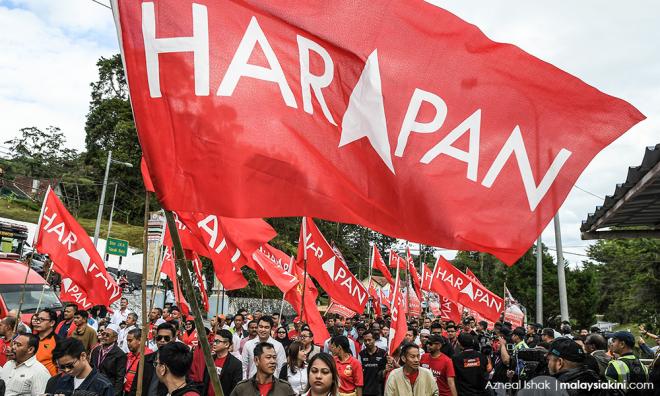
Published by Focus Malaysia & The Malaysian Insight, image from DARPAN Magazine.
The arrival of the Covid-19 pandemic has provided a room for the rakyat to raise concerns about unpaid care work in which the majority involves women. This resulted from the increase in such activity during the movement control order (MCO) and several unpaid care jobs require close contact with people.
Unpaid care work refers to all unpaid activities carried out within a household for its members. It could be direct care of persons such as children and elderly, and indirect care such as cooking, cleaning, doing laundry or feeding children, or it could even be voluntary community work.
Moreover, these activities are considered work because theoretically one could pay a third person to perform them.
The people involved in these kinds of activities are outside of the labour force – not categorised as employed or unemployed – including housewives, students, retirees and disabled person.
Although there has been an increase in these daily home responsibilities, this type of work is known to be an undervalued contributor to the economy and most of them are done for free, hence its exclusion from a country’s national income accounting.
Why should we care about the unpaid care work?
According to the UN Women, unpaid care work carried out by women actually contributes notable economic value based on the following reasons:
- On average, women spend 4.1 hours a day on unpaid care and domestic work compared to 1.7 hours a day spent by men.
- Women’s unpaid contributions to healthcare equate to 2.35% of global GDP or equivalent to US$1.5 tril (RM6.4 tril).
- Taking into account all types of unpaid care work performed by women, the contribution is worth US$11 tril globally.
The Department of Statistics also reported that women’s labour force participation rate dropped by 0.4 percentage points to 55.1% in April 2020 and remains below men’s labour force participation rate at 80.3%. Perhaps this huge gap is due to women’s informal contribution that is not accounted for in the economy.
Based on a study done by the Organisation for Economic Cooperation and Development in 2014, the time spent for unpaid care work is negatively correlated with female labour force participation.
What is worrying about not taking unpaid care work more seriously is that it increases the probability of Malaysians being in vulnerable employment, particularly during economic shocks. Furthermore, it can also lead to gender wage gaps when women spend unequal amount of time for caring responsibilities compared to men.
According to Khazanah Research Institute (KRI), women in their childbearing years take less part in the labour force with fewer working hours but could return to the labour force in the mid-30s with wage penalty.
The next question is, how do we measure unpaid care work as they take place in individual household and not transacted in the market?
The most accurate primary method to gather data on unpaid care work is time use surveys (TUS), as suggested by researchers, namely the diary-based method by asking respondents to describe their activities in a given period of time in their own words. In Malaysia, KRI has pursued a pilot study using the TUS method.
However, the challenges of using such a method include high costs and time-consuming due to factors such as memory losses and illiteracy.
In terms of policy measures, the government has done right by addressing this matter with the reopening of economic sectors with childcare centres resuming operations and schools to reopen in stages in order to lessen the burden shouldered by parents to carry the unpaid care responsibilities.
Nevertheless, this situation might not be applicable to all as some are still working from home and not all students are allowed to go to schools yet except for those taking national examinations.
So, there is a slight possibility of continuous unpaid care activities that have to be performed by the parents, especially mothers.
Besides that, the latest Penjana plan also includes gender-responsive initiatives such as provision of childcare subsidies together with grants for childcare centres, flexible working arrangement incentives as well as one-off cash assistance of RM300 for single mothers.
However, further measures can be considered by the government to ensure unpaid care work can be fully taken care of in our journey to recover from this crisis.
One of the measures can be an extension of the Social Security Organisation’s (Socso) Wage Subsidy Programme to the vulnerable women who are the informal workers and unpaid family workers.
According to the Women’s Aid Organisation, 25.9% of working women fall under the category of vulnerable employment compared to 20.9% of men labour.
As much as we welcome the government’s hiring and training incentives for the unemployed, no criteria have been set or announced for this initiative. Hopefully, the hiring incentive would be as inclusive as possible to provide the opportunity for the unemployed women to make a living and discover new skills.
Next, perhaps the one-off cash assistance for single mothers can be continued as there is a high possibility that the aid will be a huge relief for those who spend most hours carrying out unpaid care responsibilities.
Lastly, the implementation of the seven-day paternity leave for the private sector workers that was famously talked about last year could help reduce the burden experienced by mothers in bearing childcare responsibilities.
It is important to have a look at this matter by ensuring reliable method to collect data before formulating policies as it can transform lives and address gender inequality.
Nur Sofea Hasmira Azahar is Research Analyst at EMIR Research, a think tank focused on strategic policy recommendations based on rigorous research.

